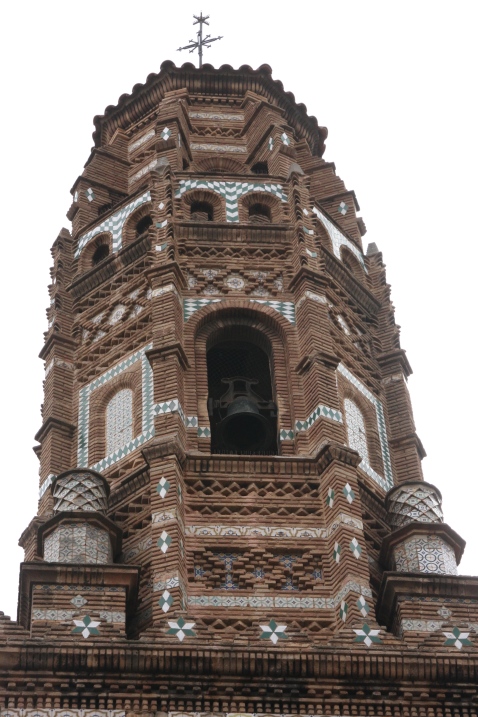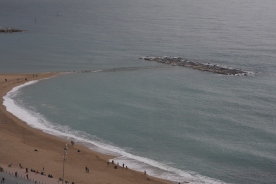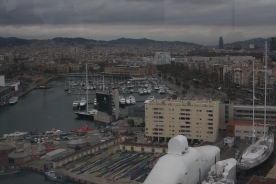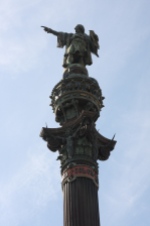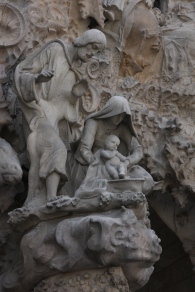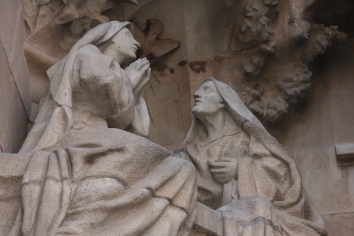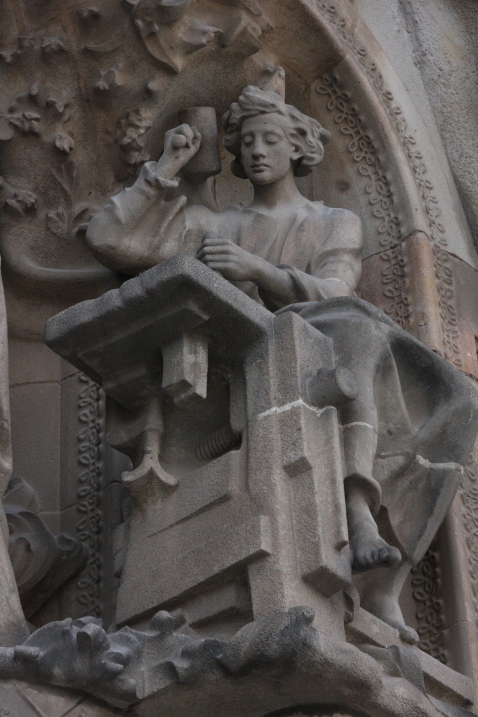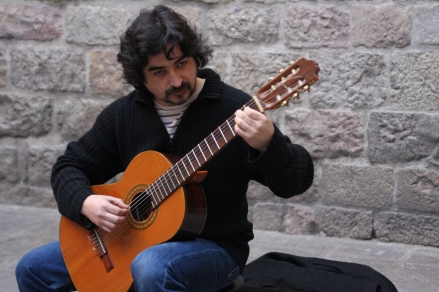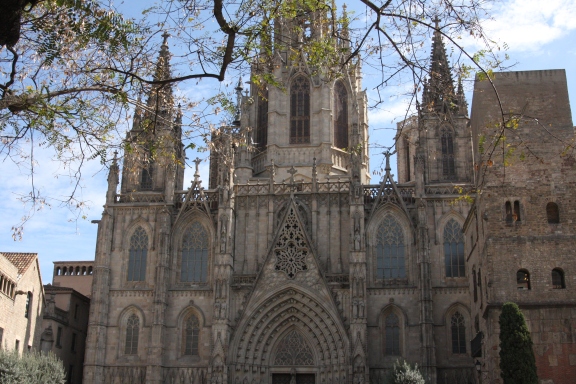Author: Turner Cowles
Open letter to Eric J Barron
Hi Dr. Barron,
I remember being one of your first interviewers when you came on as president at FSU, and I want to offer a note of encouragement as you take on the new challenge at Penn State. There is no doubt in my mind you are the most qualified man for the job.
Penn State could use your student-centered agenda right now. So go there, and do what you do best — make the university the best it can possibly be! You certainly made that dream a reality for Florida State, now it’s time to take your brilliance elsewhere.
Noles around the world are definitely sad to see you leave our beloved FSU. You came back to Florida State aiming to make it the most student-centered university in the nation, and — in my mind — you succeeded in that goal. Actually, no — you exceeded that goal. You made FSU into something no one expected it could be, and we are all indebted to you for it. Our academic clout jumped, our athletics flourished (obviously) and our students strived to be better then I feel they have in decades. FSU grads are doing big things around the world. I know a ton are here in New York City with me. I, for one, am very grateful for the transparency and access you allowed me as a student journalist on campus.
As you leave FSU, not for the last time, know this — every Seminole hopes you do for Penn State what you did for Florida State. We all love you for the special, caring touch you brought to Westcott.
So, for all your hard work and devotion to the university we all love, thank you! Thank you so very much!
As always,
In True Seminole Spirit
Turner
A Man No One Was Prepared To Lose
As a journalist, there is certainly an adrenaline rush when news breaks. It might even be fair to say my profession isn’t without a small degree of a sadistic news sense — “bad news” seemingly drives my industry. But no one wanted Madiba to leave us. The world was not ready to lose such a perfectly human leader of our time.
Nelson Rolihlahla Mandela was 95 years old, and he was in ailing health; we knew it was a matter of time and just about every news organization in the world had a planned obituary prepared, if not the video already cut and edited. But I want to make it crystal clear—I am very upset that the world has lost such an inspiration. Who among us could spend 27 years in a brutal prison, sleeping on the floor, and come out so forgiving on the other side? Who among us could be so human to have relationship problems, three divorces and be so candid about the issues they’ve faced? Who could have the foresight to see how a rugby team could unite a nation during the World Cup? Madiba was a leader for more than South Africa. Madiba was a man every single person on this earth should emulate, should respect and should love. I’ve admired him since I first learned his name in middle school social studies. (Florida public schools actually taught something, who knew?)
I worked on a story about the Soweto Gospel Choir, an amazing group from near Johannesburg who have performed for Mandela before. Every one of them said they had never been in the presence of a more humble, kindhearted and sweet man. It was always a dream of mine to meet the man who guided such an amazing global transformation, but I knew it was never a real possibility. But still, even at 95 years young, Madiba kept his focus on healing, both internally and globally. Few have lived and touched so many in their life.
No, the world was not ready to lose Madiba, nor do I think it ever would be or could be truly “ready” to lose such an inspiration. Know that many journalists reporting this story do so with heavy hearts; it would be a lie if I said I didn’t cry when I heard the news.
Rest in peace, Tata. Every person in this universe will forever live in your debt.
What I Am Thankful For, In Six Tweets
I’m going to tweet a few things I’m thankful for (Max six tweets). Just a heads up.
— Turner Cowles (@tgcowles) November 29, 2013
I’m thankful for family, their amazing encouragement and love, without which I would not be who I am. (@rachyy07 is the only one who tweets)
— Turner Cowles (@tgcowles) November 29, 2013
I am thankful for the amazing opportunities I have been given. I work an amazing job with amazing people I absolutely love – @nowthisnews
— Turner Cowles (@tgcowles) November 29, 2013
I’m thankful for my alma maters, @FloridaState and @ColumbiaJourn. Both have helped me more than one tweet can ever say. #cuj13 #Seminoles
— Turner Cowles (@tgcowles) November 29, 2013
I am thankful for amazing friends, all of you, no matter where in the world you live now or how long its been. Y’all mean the world to me.
— Turner Cowles (@tgcowles) November 29, 2013
I am so very thankful for my future in front of me. My life has been very blessed so far, and I cannot wait to see where it leads me next!
— Turner Cowles (@tgcowles) November 29, 2013
And I’m very thankful that the six years of singleness has ended. #EndOnAjoke
— Turner Cowles (@tgcowles) November 29, 2013
The Future of Journalism
It makes me sad when I hear people say now is a bad time to join the journalism industry. Quite frankly, I can’t imagine a better time to join it. Is industry revenue in a decline? Yes. Are newsrooms downsizing? Yeah. Is the greater public losing trust in today’s journalists? You bet they are.
All of these things, at face value, point to now being a bad time to get into journalism, but if you dig a little bit, you’ll find there is so much more opportunity now than there has been in a long time — perhaps ever. Today’s journalists have a huge responsibility to turn our industry around, bring it back to profitability. That’s a daunting task, no doubt, but it should and must be the turning point. This is our moment to change our industry. We have this amazing chance to show the world journalism can be so much more than words printed on a page, minute packages on an evening newscast and short interviews on the radio. Journalism must change.
Only six percent of people consider media very trustworthy (Rasmussen). 42 percent of people do not trust media. That doesn’t make now a bad time to join the industry; that makes now the best time to join the industry. This industry needs to be rebuilt to be stronger, sturdier and much, much more flexible. When journalism began, editors, reporters and newsmakers packaged it in the way they thought people should consume the news. What we have now are ways to see how people actually consume their news. Instead of sticking our industry’s head in the sand, we need to change the way we produce our content. We need to grow with our readers.
I’m excited to be joining this field, and that won’t ever change.
Race Relations in Wake of George Zimmerman’s Acquittal
Some days I wonder if I am the only person who recognizes ‘white privilege’ is more than real; it’s a burden I need to shed. I am a white male. That means I am already leaps and bounds ahead of others. In 2013 America, this breaks my heart.
White privilege comes with easier access to better education, higher paying jobs, better choices in housing. These sound like good things, right? I find it disgusting that because of something I have no control over — the color of my caucasian skin — I have more choices to better my life. I don’t want special treatment. I want to know my hard work is what got me to where I am, not because of something I had no control over. I want to walk in the rain wearing a hoodie (because, let’s face it, we all wear our hoods when it’s raining and we don’t have an umbrella) knowing I look just as suspicious as a black teenager.
Today, President Obama spoke about his experience as a black man. Experiences I have never had nor ever will have. Experiences like being followed while shopping in a department store, hearing car doors lock while walking by and seeing women clutch their purses when I enter an elevator.
I attended both a PWI (predominately white institution) and an HBCU (historically black college or university). It’s no doubt thanks to this experience I have arrived at the conclusions I have about race in America. And I’ll tell you, folks: we have a very long road ahead of us.
At this point I need to mention I am a Floridian, and I am currently ashamed of my state. Just days ago, a jury in Sanford, Fla. acquitted George Zimmerman, a 29-year-old hispanic man, who shot and killed Trayvon Martin, a 17-year-old black adolescent.
Now, based on the evidence before the jury, I believe they came to the right conclusion, much like my friend John explained in his Facebook status here. Based on Florida’s wide-reaching and poorly written self-defense law, George Zimmerman was well within his right to defend himself with deadly force.
The problem is George Zimmerman never should have confronted Trayvon Martin.
Does no one even remember the police telling #Zimmerman to stay in the car? He disobeyed, and moments later a 17-year-old died.
— Turner Cowles (@tgcowles) July 14, 2013
After I tweeted this one, 127-character tweet, I got serious backlash from the twitter trolls. I call them twitter trolls because none of them followed me and all of their timelines were filled with falsely “correcting” people about the 911 call. The saddest part of these trolls? They were all white. All of them. Every single one. The people who retweeted my tweet were primarily black.
Now, did police tell Zimmerman to stay in his vehicle? No, and I admit I incorrectly said they did. But:
Dispatcher: Are you following him?
Zimmerman: Yeah.
Dispatcher: Okay, we don’t need you to do that.
Zimmerman: Okay.
A police dispatcher, who may not be a sworn police officer but still has some authority, told Zimmerman not to follow Martin. Had Zimmerman listened to that simple instruction, Trayvon Martin, who had nothing on him but a can of Arizona Iced Tea and a bag of Skittles, would have made it home to watch basketball. For almost 20 seconds, it sounds like Zimmerman continued to run after Martin.
When it comes to strict, racial definitions of the actors in this story, neither is “white,” so neither really enjoyed white privilege. Zimmerman is hispanic, but his name sounds white, which qualified him for society’s white privilege.
Were there racial undertones to this crime? Yes. According to Zimmerman’s brother, Robert, George Zimmerman tutored young, black kids in his past, suggesting Zimmerman was not racist. But, as was pointed out to me after the original posting of this blog, one act of tutoring black children is not enough to prove someone is not a racist. No matter how you look at this, Zimmerman called the police because he saw a black teenager in his neighborhood acting “suspicious.” Hell, his call to the Sanford Police had several racial undertones with statements like “these assholes, they always get away” and “f**king punks?” Some argue Zimmerman didn’t say “punks,” instead believing him to have said “coons,” a racial slur. The audio is not of a high enough quality for me to easily make that distinction, so I won’t guess which he said.
16 months passed from the time Trayvon Martin was shot until the day George Zimmerman was acquitted. That was plenty of time for the mainstream media to dig into the case, to decipher what was said on that 911 tape, but it seemed few media outlets wanted to spend the time digging until Zimmerman’s trial started. CNN experts say Zimmerman said punks, not coons. But in the time before the trial, why was no one examining and digitally enhancing the 911 call?
What I don’t understand is how someone can justify using a gun in a fist fight. When someone has a gun, fight or flight doesn’t enter into the equation any more. I know a gun can end any confrontation, so why would I choose to run? In 2005, Florida’s legislature expanded the Stand Your Ground law to include someone like Zimmerman — someone who pursued a fight. I’m not saying George Zimmerman chased Trayvon Martin with the intent to kill him, but an aggressor should have a much steeper climb to prove self defense. Was George Zimmerman beat up? Yes. Was he bruised and bloody? Yes. However, he never needed to fear for his life had he left justice to those sworn to uphold the law.
In President Obama’s address today, he raised the best question: “if Trayvon Martin were of age and armed, could he have stood his ground on that sidewalk?” That answer, I would hope a jury would find, is yes. What person in their right mind wouldn’t fear great bodily harm or death if someone they had never met before started running after them? I know I would. I was taught to defend myself; if someone starts a fight, you can bet your ass I’ll be the one to end it. In this case, I can’t see how Trayvon Martin could have been the one to start a confrontation. Zimmerman pursued him; it really is that simple. The fact is, the color of Trayvon Martin’s skin played a role in George Zimmerman’s call to the police.
The saddest part is knowing the Martin family will never see Trayvon go to college, get married or start a family. Their baby boy will always be 17 years old. They will always deal with the scar of a family ripped apart senselessly. Trayvon Martin, if it is up to me, your death was not in vain. We will fix this country one day, and I pray it happens soon.
Defending Marriage
So the Supreme Court again made history. The court paved the way to re-allow gay marriage in California, and it ruled section three of the Defense of Marriage Act unconstitutional.
Windsor v. United States, the case fighting against DOMA, and Hollingsworth v. Perry, the case against California’s Prop 8, are definitely landmark decisions, but they leave a lot of life-improvement work to be done in dozens of states around the country. Teenagers are still taking their own lives because who they are doesn’t fit in with who society thinks they should be; one life taken is one too many.
The high court did not strike DOMA down in its entirety; section two is still in place. Section two is the section that allows one state’s government to pick and choose which official marriage records from another state will be valid and legal. This goes against the simple, 22-word sentence in the U.S. Constitution known as the full faith and credit clause.
“Full faith and credit shall be given in each state to the public acts, records, and judicial proceedings of every other state.”A marriage license is listed as a public record in every state, so by federal law, a marriage license issued to Adam and Steve from New York must be recognized in Florida. That’s not the case.
“No state […] shall be required to give effect to any public act, record, or judicial proceeding of any other State […] respecting a relationship between persons of the same sex that is treated as a marriage under the laws of such other State […] or a right or claim arising from such relationship.”There’s no way around it, that’s unconstitutional. To its very core, section two of DOMA goes against the constitution of the United States. Couple this ruling with changing American opinion, and suddenly LGBT rights seem mainstream and inevitable.
“55% of Americans support same sex marriage,” claims an ABC News, Washington Post poll from May 9, 2013. The problem is same sex marriage is not an American issue; it is one of many issues delegated from the federal government down to state legislatures.
There’s no question opinion on gay marriage is shifting over time in this country, but like most big things, it moves slowly. In the last eight years, people in every state have become more accepting of LGBT people getting married.
 Those were the numbers from last year; take a look at state support for same-sex marriage at its most recent polling:
Those were the numbers from last year; take a look at state support for same-sex marriage at its most recent polling:

* Percent of Nevadans who support a repeal of the state’s same-sex marriage ban
** Percent of Indianans who oppose barring same-sex marriage with a constitutional amendment
So, looking at this bar graph, gay rights are advancing in the nation, but that doesn’t necessarily translate to gay marriage. 10 states want to improve standing for their LGBT citizens, but they are wary of the word “marriage.” Arizona, Florida, Alaska, Kansas, Texas, Georgia, South Carolina, Nebraska and Louisiana all have more than 50% support for some kind of recognition for same-sex couples, but they don’t want to use the word marriage.
The troubling part is the number of states that have constitutionally banned same-sex marriage: 30. Even states with some of the highest polled support for same-sex marriage, like North Carolina, have passed amendments to their constitutions that will require several years and state congressional bipartisanship to undo. There is one act that could sweepingly change that: a ruling by the Supreme Court that declares it unconstitutional, and Hollingsworth v. Perry is likely not the last gay marriage case to be decided by the high court. However, the court’s more conservative judges, even the swing voting Anthony Kennedy, seem unconvinced this is the right action now.

With today’s decision, it might be decades before same-sex marriage is an American right, now just a New England, Iowa and Washington right. North Carolina voters just passed an amendment to their constitution to ban same-sex marriage. That was in May 2012, when 51% of Americans supported gay marriage. That’s the trouble with polls and elections are similar: not everyone takes part. If North Carolina wants to vote to allow gay marriage, it would need 60 percent of all legislators vote in favor of putting it on a statewide ballot. That’ll take loads of time and money.
North Carolina’s way to equality is easy compared to some states. Nevada won’t have a chance at allowing same-sex marriage until 2016 because it’ll take two consecutive legislatures (so two votes in the state senate and two votes in the state house, before and after an election cycle) to put the ban-repealing amendment on a statewide ballot.
That’s in Nevada, a state on the border between majority support and majority opposition of same-sex marriage. The likelihood of Nevada coming together — when two polls, only a few months apart, said Nevada supports gay marriage by 47% and 54% — is almost nonexistent. The same goes for Wisconsin.
The other 27 states with constitutional bans on gay marriage have to go through a long process to repeal the bans, though none as brutally difficult as Nevada and Wisconsin.
(Thanks to buzzfeed for prompting this post)
So Long, and Thanks for the Memories
It is time for a heartfelt thank you to everyone who has made this past year every bit as amazing as it has been. Columbia University Graduate School of Journalism — thank you! We made it. We are the centennial class, and we are ending an era at Columbia Journalism; next year’s students will have an entirely different curriculum than we did. Onwards and upwards!
When I arrived in New York City in late July 2012, I never imagined in one short year I would learn so much and make so many meaningful friends. The past year has been stressful, I lost a lot of sleep (and found some in times I probably shouldn’t have) and I produced work of a quality I never imagined I could. In the fall semester we all had RW1, the four-pack essentials and our elective. Relatively speaking, those few months were the same for most of us — with small differences between the concentrations (another thing going away with the class of 2014). Those months were stressful, they were crazy and they were fun. Yeah, that’s hard to believe, but amid all the stress of producing videos, print stories and squeezing in some learning, we had some fun. We made friends, and we learned how to play as hard as we worked.
We learned things we never thought we could — like how to navigate this city’s massive underground layer. The subway map ingrained itself in our minds, and we used Google Maps only to figure out when the next train was scheduled to show up. We whined and moaned when all the J School parties were held in the Lower East Side; well, we whined until we realized that would be the only time we would get away from Morningside Heights or our beats. Then we whined about how long it took to get there.
Then the spring semester came and hit us all like a ton of bricks. Now we had three courses — a seminar, a workshop and an elective — to keep up with, and each course expected us to treat them like a 40-hour a week fulltime job. That was 120 hours a week, and we all managed to survive it and come out on the other side. Each class expected completely different things, and each class expected all of our time. Oh, did I mention the master’s projects? That sustained reporting piece we all had to do. Yeah, that was another fulltime, but sort of on the side, project.
But we made friends and helped each other because we all were going through the same stress. The friendships we’ve all made this year will only continue to grow and flourish. I mean, we put in sweat, blood and tears with these people. At late hours. On weekends. All year long. I know I met some people who have inspired more than any major figure could. It’s awe inspiring — to say the least — to see someone pull out an amazing story when the only thing they want to do is curl in a ball and hide.
The best comparison I can come up with for this year is that we were all like sponges. We soaked up as much new knowledge as we could, but there was never any way we could retain all of it, so it started dripping out and we missed some. That’s where the breaks (wait, what breaks?) came in. Over Thanksgiving, Winter and Spring break, when we weren’t stressing about our master’s projects, we were able to relax (somewhat) and refocus on what we were here to do. We let other students’ progress and determination push us to do better for ourselves. I know I was inspired by dozens of my classmates. CUJ13 is a family, and graduation is far from the end of our relationships.
We networked, we produced, we recorded, we voiced over, but – most importantly – we grew. The year was one hell of a ride. I hated it at times, and it made me mad, but in retrospect it all was worth the growth. So, to the Centennial Class of 2013 from Columbia University Graduate School of Journalism, THANK YOU.
Spring Break — Barcelona
I had a bout of madness two weeks ago. While talking to a good friend from undergrad, I learned he would be spending a few days in Barcelona before going home to Netanya, Israel. I’ve wanted to visit him in Israel for a while, and I decided this was my chance.
In four years of undergrad, I never did anything crazy for spring break. Now, I had my chance. In an effort to save space, I’ll post about Israel separately (probably tomorrow).
Take a listen to the song I listened to as the plane landed at BCN.
I flew from New York City to Barcelona on Friday, March 15. I was meeting my good friend Eli from undergrad, and I was quite excited. 
Spain was beautiful. The flight there was pretty uneventful; I think I watched three episodes of Downton Abbey on my computer. The airport in Barcelona is a few miles outside of the city, but Spain is well connected by rail, so I was able to take the train into the Sants Estacio (Sants Station), where I walked to my hostel. I stayed at the Alberguinn Youth Hostel in Sants, Barcelona. It was so typical, urban Europe.
I got there pretty early in the morning, so I couldn’t check into my room right away — they were still cleaning it. I changed out of my airplane clothes and locked my suitcase in the hostel. My friend hadn’t landed yet (he had a layover in Kiev). I walked around a bit to see the city on my own before coming back to grab a quick nap. That night was pretty low key. After my nap, we all went out for a bit of dinner in the Fontana neighborhood. I had a spinach ravioli with bolognese sauce; it was delicious.
We went out for drinks around there, but we didn’t last long. Eli and I were both pretty jet-lagged.
The next day, Eli, his friends Nicole, John and Ray, and I went to the city’s center. We walked down to the Museu Nacional d’Art de Catalunya — the National Museum of Art in Catalunya.

After seeing the Museum (it was closed), we walked up to the Poble Espanyol. Poble Espanyol was absolutely gorgeous. I got lost a few times just wandering through the beauty.
Sure, Poble Espanyol was beautiful, but it was only one thing Barcelona had to offer, and only my first real day there. Eli and I split up for a bit, and I walked toward the Mediterranean Sea. I “hiked” up the Park de Montjuic, which lends itself to some beautiful photos of downtown Barcelona and the Sea.
Once I made it to the top of Montjuic, I took the teleferico (the cable car) down to the neighborhood known as Barceloneta. Barceloneta is a small peninsula that blocks in the harbor of Barcelona.
Honestly, I had forgotten Barcelona was a port town. More than 1 million passengers passed through the Barcelona port in 2010. Ok, so this is just an excuse to get to the beautiful port building, so here are some photos.
Not only is Barcelona a port city, it’s also on the sunny Mediterranean Sea, which brings certain beach perks with it. The beaches of the Mediterranean are particularly beautiful.
The next day I had an awesome opportunity to go to a football match — FC Barcelona vs. Rayo Vallecano. We were in nosebleed seats, but we were in the endzone, and they only cost €27. It was a pretty great deal for the awesome experience it was.
The next day, I got back in touch with my faith. While I’m not the greatest Christian (I’m hardly a mediocre Christian for that matter), I visited the Sagrada Familia. The Gaudi church was absolutely amazing, even though some people in Barça consider it a tourist trap. New York City has several tourist traps that I still love, even though I’ve lived here for a bit. There wasn’t an inch of the Sagrada Familia that hadn’t been planned to the base of the columns — one was a turtle.
I said the Lord’s Prayer, and I’ve honestly never felt more connected to God (Allah, Yahweh, the almighty being, etc.). This trip was one of faithful awakening (sort of), cultural immersion and spontaneity.
Speaking of spontaneity, on my last day in Barcelona, I decided to leave. I got on a bus with Eli and Nicole to Valencia to see the Las Fallas festival. Las Fallas is a festival to celebrate and commemorate Saint Joseph. Valencians work for months on large flammable things made of cardboard and other materials that will then be set on fire. Fire, fireworks, sparklers and poppers are all around the city.
Going to Valencia (a four hour bus ride) knocked me out the next day. I was ready to get on my flight to Tel Aviv to meet Eli there (he teaches in Israel — he was just visiting Barcelona like me). Flying there took me over Italy, and I saw it out the window. I want to go back to the Amalfi Coast.
Race and Education
There needs to be a national conversation about education and race. Black poverty is still more common than white poverty, and black income is still far below white income. In these yet-to-be-United States, as James Baldwin calls it, a black household’s income is roughly 30 percent below the median while a white household’s income is just above median income. Black children are more than twice as likely and hispanic children are three times as likely to drop out of high school as their white peers. America will never be truly equal until something changes to make education accessible to everyone.
Education is a very reliable determination of wealth potential. The 2012 unemployment rate for people holding a bachelor’s degree was 4.5 percent, and 3.5 percent for master’s degree holders. Someone who holds a master’s degree earns, on average, double what someone with only a high school diploma earns.

It has been clear for a long time education is becoming more necessary. An American with a master’s degree, per the 2012 census, earns more than double the $34,000 median income of a high school graduate. I don’t know what the solution is, but I know the education gap is an issue that affects all of us—particularly as we advance into a further technology-filled world.
What are your thoughts?















